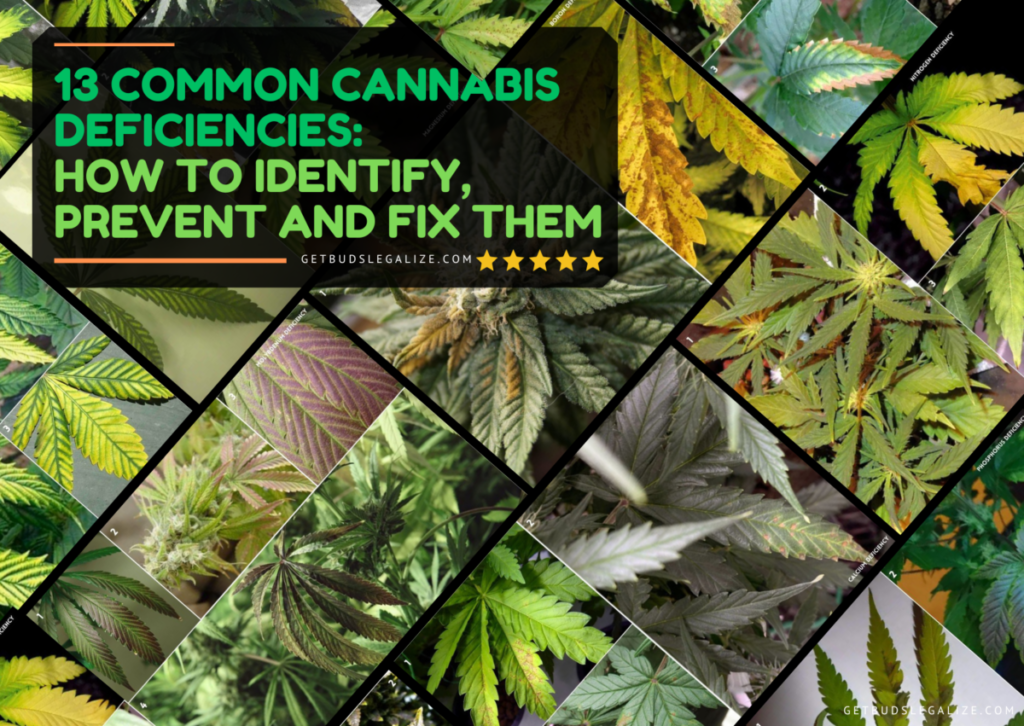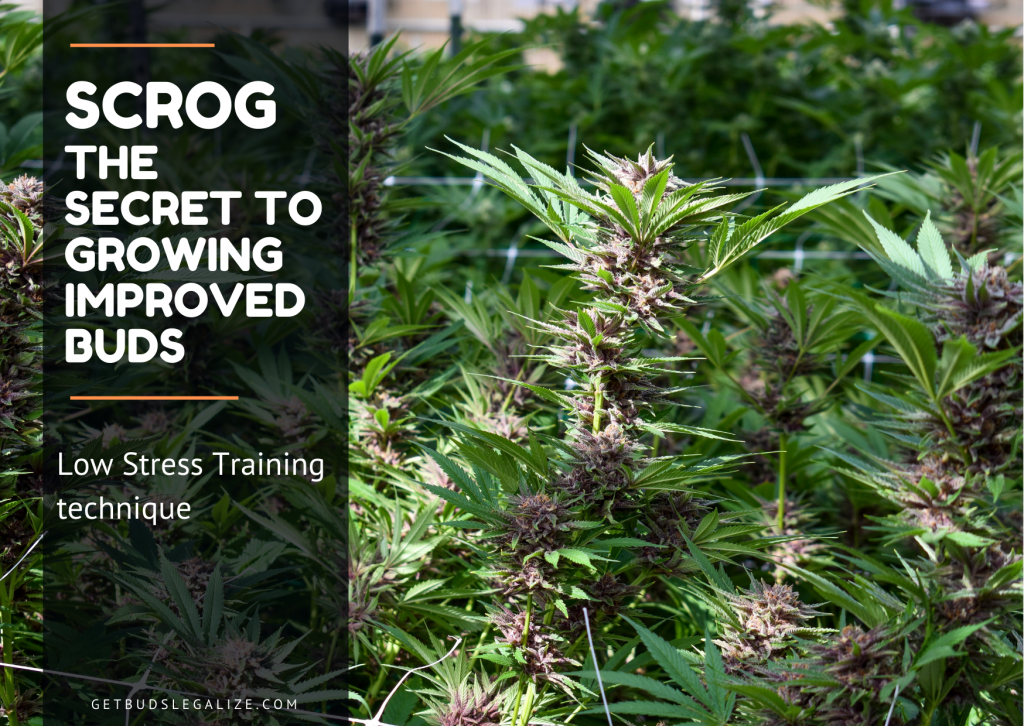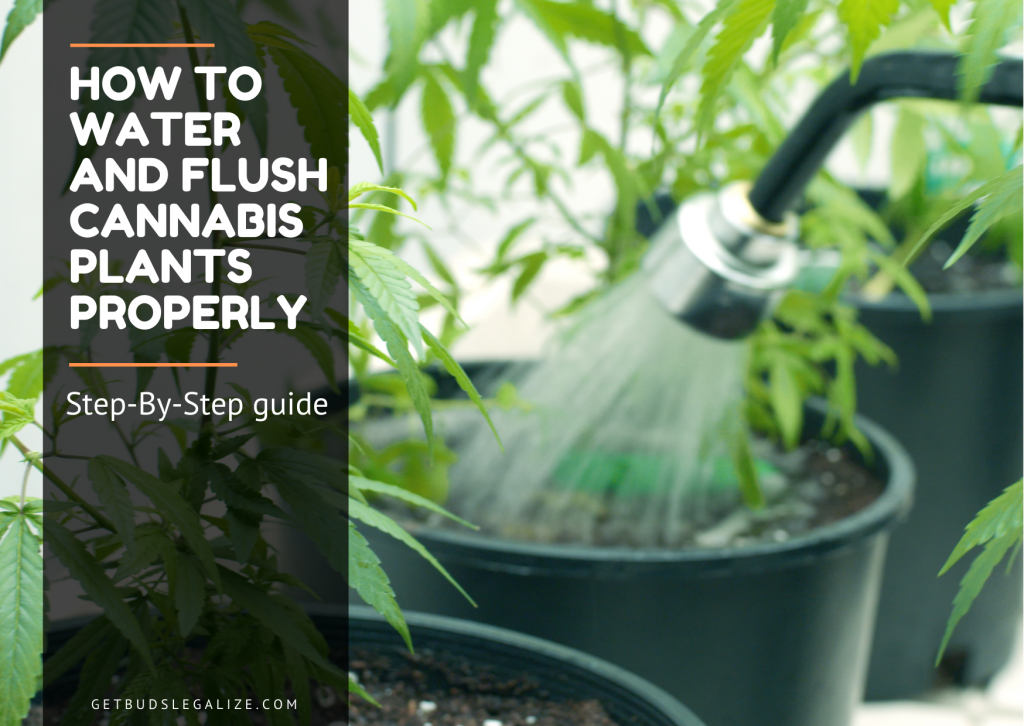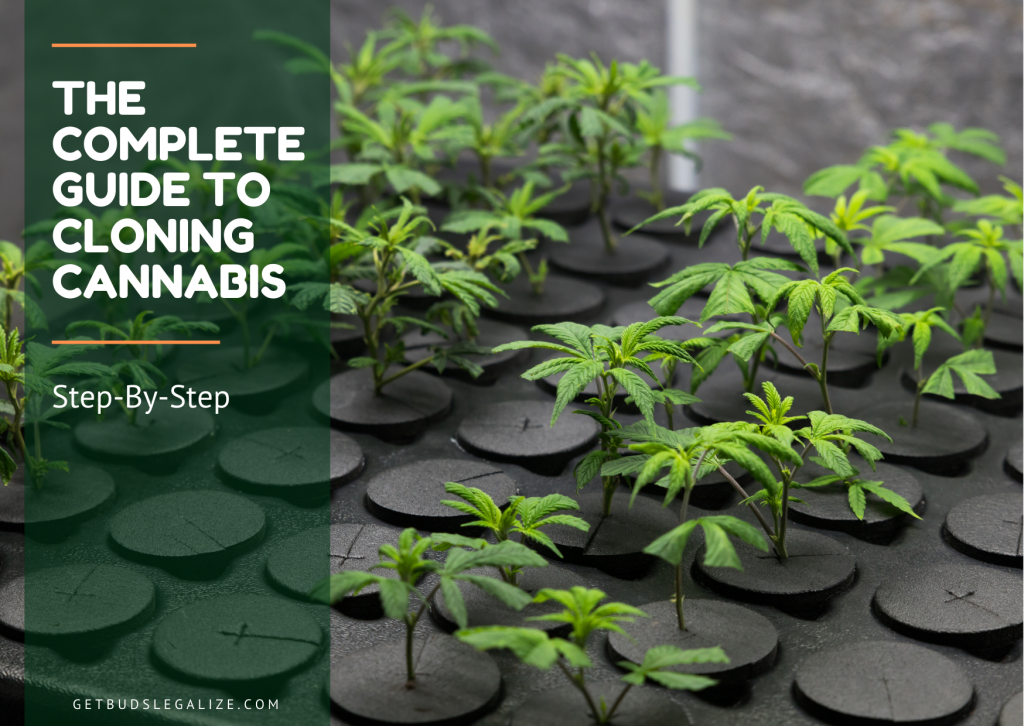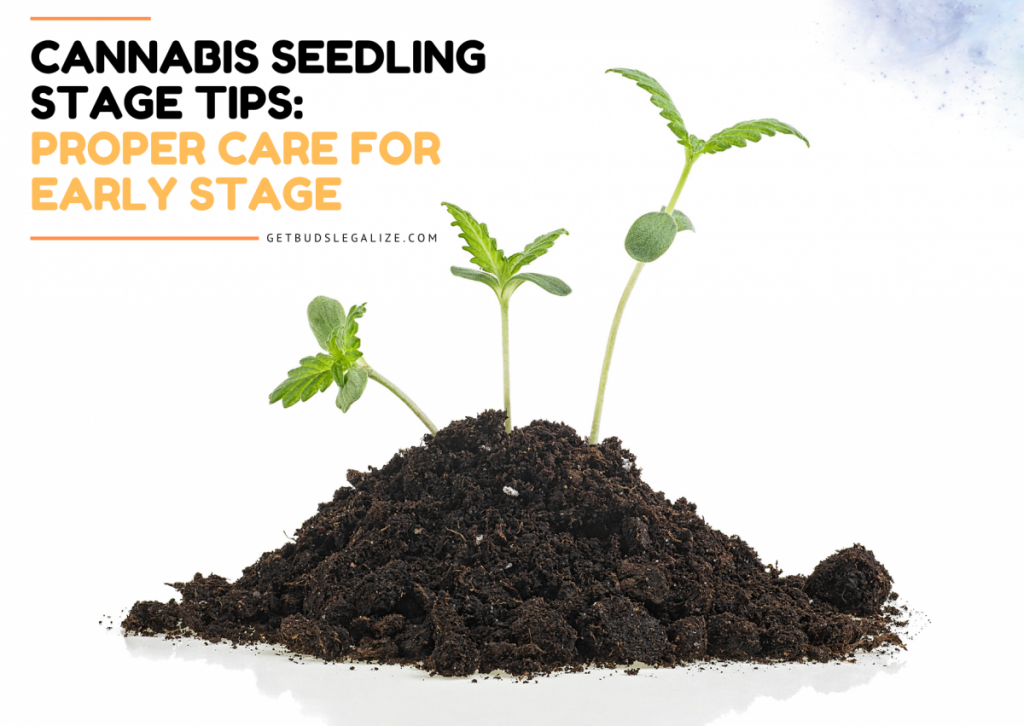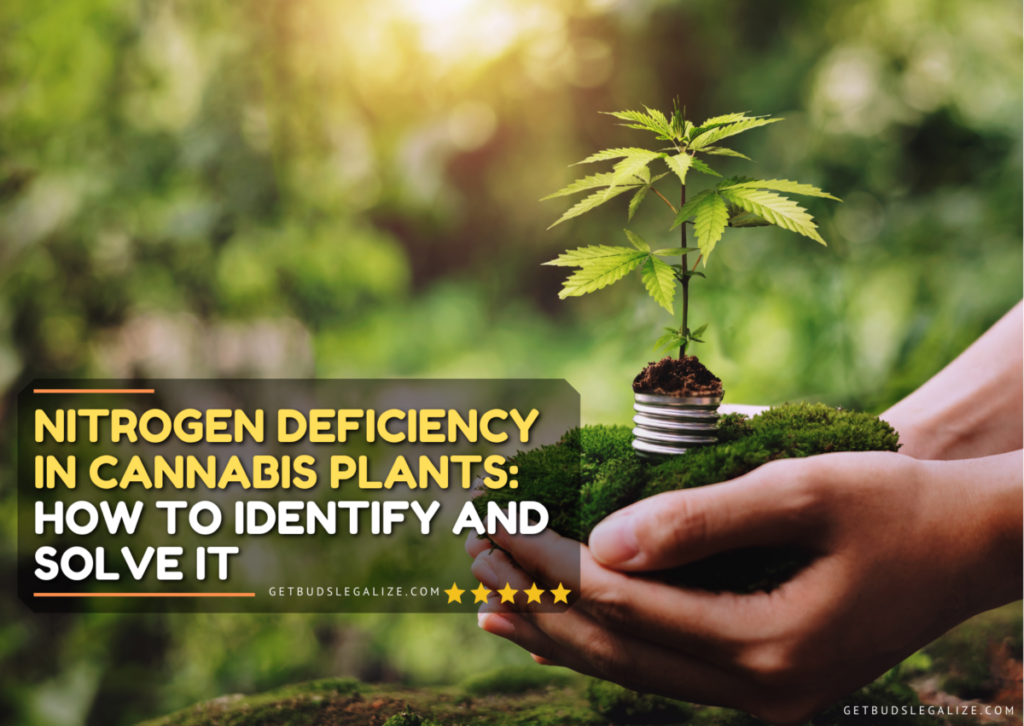Fixing Manganese Deficiency in Cannabis Plants: Expert Tips
Manganese deficiency is a common problem plaguing cannabis growers, especially those using soilless media or hydroponic growing systems.
Manganese is a vital element for cannabis, as it is involved in many important processes, such as chlorophyll production, nitrogen uptake, pollen generation and root growth; If left untreated, manganese deficiency can lead to plant death. Fortunately, there are ways to prevent and correct a deficiency.
In this blog post, we will share with you some expert tips on how to identify and correct manganese deficiency in cannabis plants.
What Are the Common Symptoms of a Manganese Deficiency in Cannabis?
The most noticeable symptom of this condition is yellowing of the leaves, which may also develop brown spots as the condition progresses. However, these symptoms are similar to those of other nutritional deficiencies, making it difficult to identify the root cause.
It is crucial to make an informed diagnosis before reaching any conclusions. You can use the list of symptoms below to help you accurately identify manganese deficiency.
It is also important to note that, although it is not a very common problem, it can have serious effects on the growth and yield of your plants if left untreated.
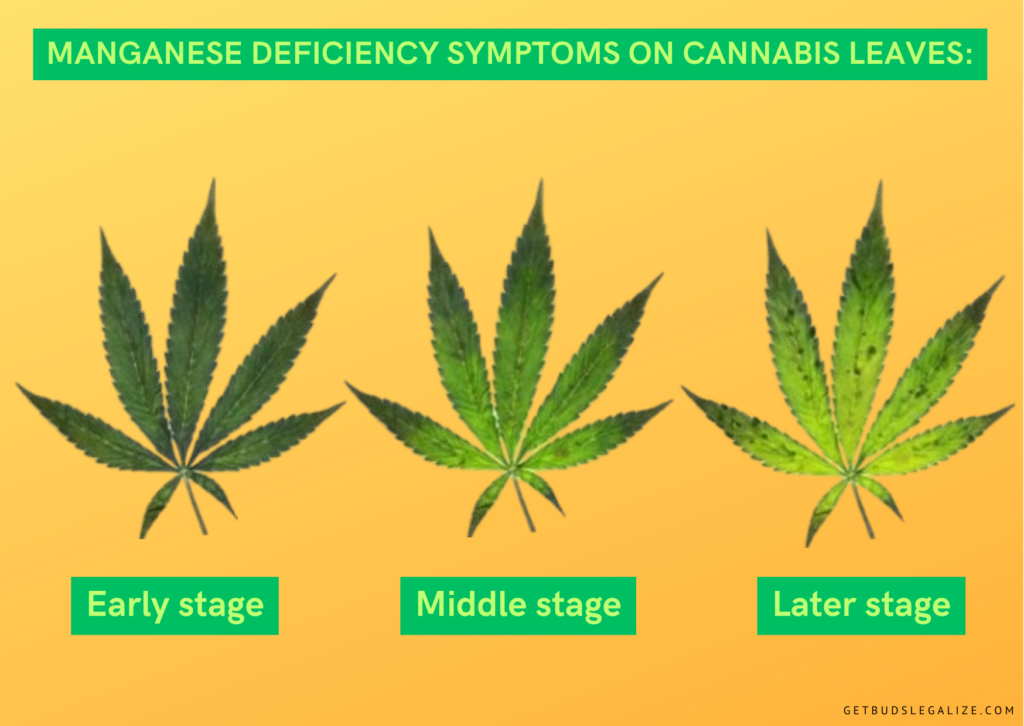
Early Stages of Manganese Deficiency
Early signs of manganese deficiency include slight discoloration, usually manifesting as yellow leaves due to stunted photosynthesis and decreased chlorophyll production.
Manganese deficiency typically causes a patchy yellowing of interveinal chlorosis (yellowing between the veins), which affects young leaves toward the top of the plant.
Unlike nitrogen deficiency, in which the entire leaf yellows uniformly, manganese deficiency presents differently.
The Progression of Manganese Deficiency
As the deficiency progresses, the yellowing of the leaves becomes more evident, with more evident signs of interveinal chlorosis. However, the leaf veins remain green, which is a unique characteristic and a good starting point for making a diagnosis.
Late Stages of Manganese Deficiency
In the later stages of manganese deficiency, the yellow areas turn into brown necrotic spots (dead spots) and you will notice stunted growth. Eventually, the leaves begin to curl, wilt, and eventually fall off.
Unfortunately, at this point, it is usually not possible to save your plants, no matter what corrective actions are taken.
What Causes Manganese Deficiency in Cannabis Plants?
Manganese Deficiency can occur for various reasons, but the most frequent cause is an imbalance in pH levels. Inadequate pH can hinder the absorption of nutrients by plants, leading to nutrient lockout.
Therefore, it is crucial to maintain pH levels within the appropriate range to ensure that plants receive all the nutrients needed for healthy growth.
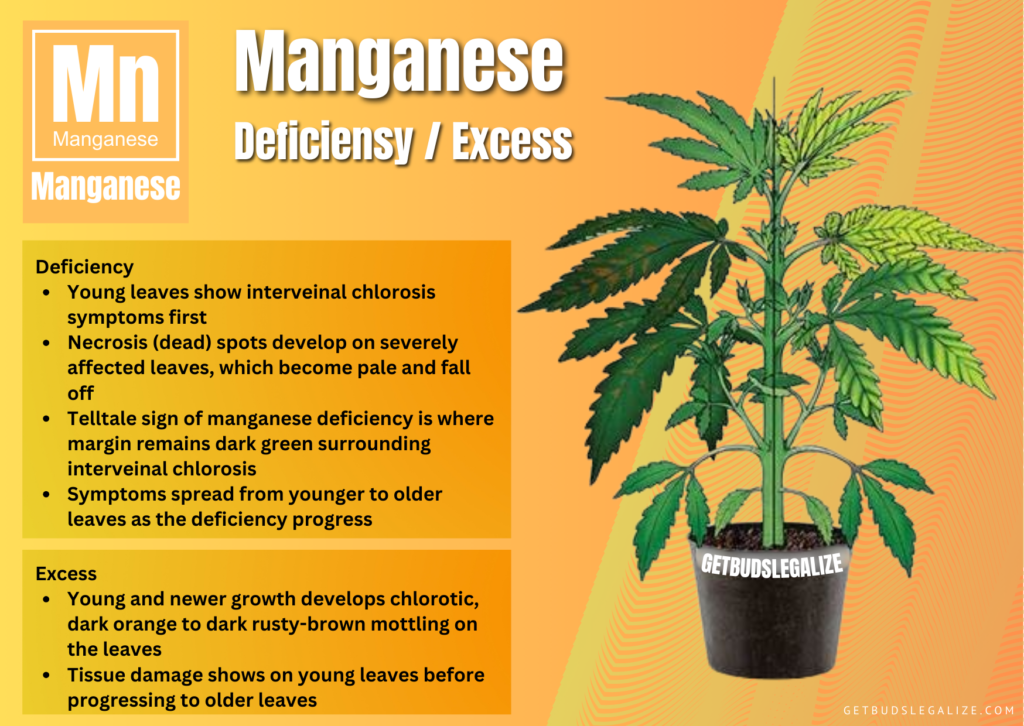
Cannabis Manganese Deficiency or Iron Deficiency?
It is common to confuse a manganese deficiency with an iron deficiency. However, treating a plant with iron when it needs manganese can make the deficiency worse. This is because excess iron in the growing medium can prevent the plant from absorbing manganese. As a result, the plant will not receive the nutrients it needs to grow properly.
To understand the difference between the two, you have to look at the leaves. If they turn yellow, but the edges around the veins remain green, it is likely a manganese deficiency.
There are many reasons why a plant might have a manganese deficiency. For example, it may not have received enough or any nutrients, or the plant may have been over-watered, which would limit its ability to absorb nutrients.
However, the most common cause of manganese deficiency is an unbalanced pH level in the soil. Plants need a neutral pH level to grow properly. If the pH level is too high and the soil is acidic, the plant may experience a manganese lockout.
How to Fix Manganese Deficiency in Cannabis Plants
If you notice a manganese deficiency in your marijuana plants, there are two main causes, and the problem can be solved by taking a few measures.
First, it is important to ensure optimal soil pH levels and prune your plants. Additionally, you can use foliar fertilization and apply nutrient supplements. However, it is important to keep in mind that it takes time to see results.
The correction process can take anywhere from six days to several weeks, depending on the climate and severity of the deficiency. As your plants recover, you’ll notice a decrease in yellowing leaves and brown spots spreading to other parts. The tissue along the veins of some leaves may turn green, then fuse and expand into healthy growth.
Keep in mind that you may still need to remove severely damaged leaves.
Monitor and Adjust pH Levels
Monitoring and regulating pH levels are critical to healthy weed growth. A manganese deficiency can occur if the pH level of the growing medium is not maintained properly.
To ensure the best pH for manganese uptake at the roots, follow the guide below:
- For soil, maintain a pH between 6.0 and 7.0. If you suspect your plant is not getting enough manganese, lower it to 6.0–6.5.
- For hydroponics, maintain a pH between 5.5 and 6.0. Crops may absorb manganese when the reading is below 6.0.
Manganese deficiency in marijuana growers is usually noticed when the pH of the growing medium exceeds 6.5. At this level of acidity, the cannabis cannot absorb trace minerals. To remedy the situation, wash the soil with pH 6.0 water to remove excess nutrients and iron, which block manganese. Then add a pH 6.0 nutrient solution that contains Mn to restore the level and help your plants recover.
It is important to monitor watering and feeding to prevent the problem from recurring. Using high-quality fertilizers and growing media for cannabis crops offers the best protection against many ailments. Some nutrient lines can self-adjust to the optimal pH level of the substrate, making them cost-effective.
Prune Your Cannabis Plant
Another good solution is to prune the affected leaves and dispose of them to avoid diseases and pathogens. However, you should not remove all the leaves at once. Instead, it is recommended to do this gradually to avoid causing too much stress to your plants.
When cutting the leaves, be sure to use a pruner or sharp knife to avoid damaging them. Additionally, it is important to sterilize your tools and work area to prevent contamination. Don’t forget to clean the area once you’re done.
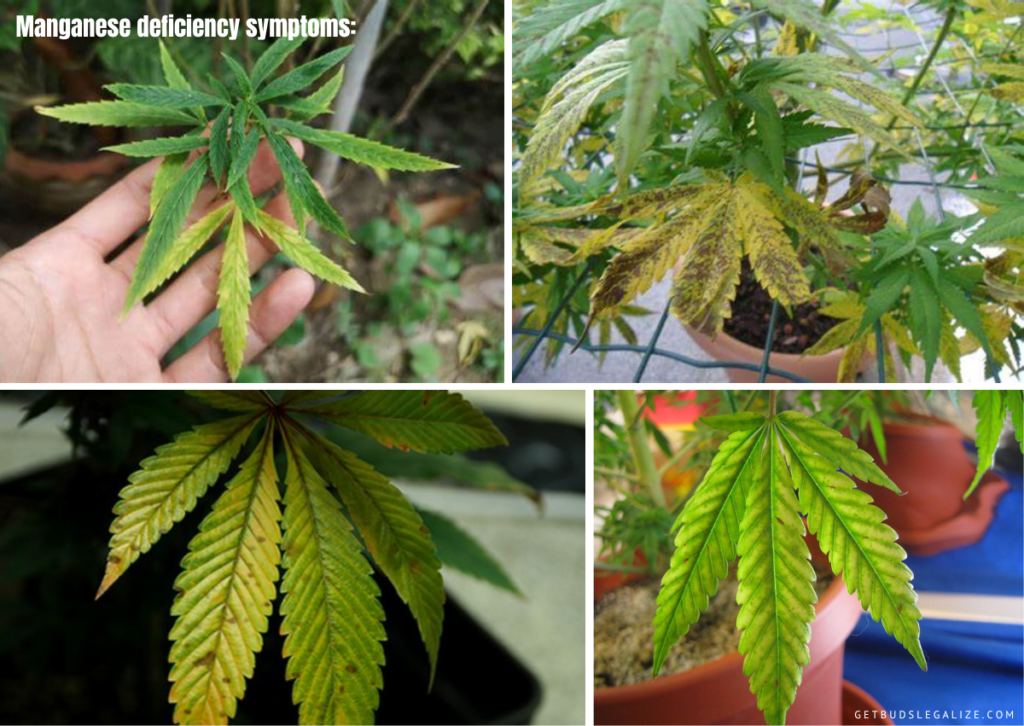
Use foliar Spray Feeding
It is recommended to use a foliar feeding solution containing trace elements to address manganese deficiency in cannabis. Manganese sulfate is usually available in most garden stores and is a great solution for this purpose.
However, it is important to avoid applying chemical fertilizers at full concentration as they may cause nutrient burn.
It is advisable to dilute the fertilizers by approximately 50% and gradually increase the dosage if necessary. Additionally, watering the plants and growing area thoroughly can improve the rate of nutrient absorption.
Spraying crops is a quicker method of correcting the problem than watering because the leaves can absorb more nutrients from the supplements.
This approach also provides more carbohydrates into the root structure and prevents nute burning.
Consider Using Nutrient Boosters
Manganese deficiency can occur in cannabis due to several factors, such as a lack of fertilizer, using general-purpose solutions with lower micronutrient content, excessive leaching, or applying iron chelate drenches. While most commercial soil contains essential nutrients including manganese and microorganisms that your plants need, these “starter” packs only last for about a week.
To give your plants energy and speed up their growth process, it’s recommended to use the best cannabis nutrients. These products contain substances that improve the growth and increase the yield of crops. To ensure your plants receive manganese and other essential nutrients, it’s necessary to feed them water-soluble, peat-lite fertilizers with the correct mix.
Manganese competes with other nutrients such as iron, zinc, magnesium, copper, and calcium for absorption. Therefore, feeding your crops with the correct Mn to Fe ratio is crucial to prevent manganese deficiency in weed plants. The best soil mixes provide an optimal balance between 1:2 and 1:4, and a lower ratio can lead to a deficit of the former micronutrient.
Choosing the appropriate fertilizer for your marijuana plant can prevent recurring problems and promote healthy growth.
Some Tips to Avoid Manganese Deficiency
Manganese deficiency is not a problem that occurs frequently; however, once done, it can be difficult to deal with. Therefore, it is crucial to take preventative measures to ensure the safety of your plants.
To safeguard your plants, you can implement the following tips:
- Monitor and keep the soil pH at 6.5. Crops can’t absorb Mn when it’s too acidic.
- Use fertilizers with the optimum nutrient balance. It is recommended to start with a lower dosage to avoid nute burn.
- Use high-quality cannabis seeds to minimize potential problems. They develop into robust plants resistant to pests and diseases, giving you healthy marijuana flowers.
Conclusion
Manganese is a crucial nutrient that plays a vital role in the growth of cannabis plants. The good news is that treating a manganese deficiency in cannabis is relatively easy. By following these steps, growers can observe healthy new growth in their plants and be assured of their quick recovery.
Other Common Nutrient Deficiencies:
Correlated Article:
ILGM Fertilizer

- From seedling to harvest, give your plants everything they need.
- Enough for feeding at least 5 plants.
- Discounted Package Deal
- Works well in soil, hydroponics, and other growing mediums.
- The best way to treat your plants
ILGM Plant Protector

- Protect your cannabis from diseases and harmful pests.
- Contains three 20 ml bottles.
- Enough supplies to protect 20 plants.
- It can be used in soil, hydroponic, and all other growing mediums.










